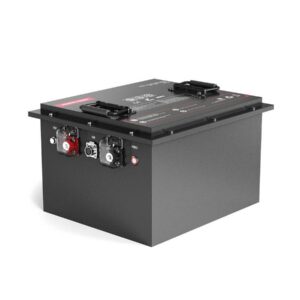
What does the C stand for in RC batteries?
In RC (Remote Control) batteries, the “C” stands for charge/discharge rate multiplier, representing the current at which a battery can safely deliver energy relative to its capacity. A 1C rating equals discharging the full battery capacity in one hour—for example, a 5000mAh battery at 1C delivers 5A. High-C batteries (e.g., 50C) support rapid power bursts critical for RC cars and drones.
What Is the Best Battery for a Diesel Pickup Truck?
How is the C-rating calculated in RC batteries?
The C-rating is derived by dividing the maximum continuous discharge current by the battery’s capacity in ampere-hours. A 5000mAh (5Ah) battery rated 50C can safely output 250A (5Ah × 50). Pro Tip: Exceeding the C-rating risks overheating and premature cell failure.

Practically speaking, manufacturers test batteries under controlled loads to determine peak and continuous C-ratings. For instance, a 100C “burst” rating might allow short 10-second pulses but mandate lower continuous use. Transitional factors like temperature derating apply—lithium polymer (LiPo) cells lose ~15% efficiency below 10°C. Real-world example: A 2200mAh 45C LiPo powers RC helicopters by supplying 99A (2.2Ah × 45), enabling aggressive maneuvers without voltage sag.
Why do high-C batteries matter for RC applications?
High C-ratings ensure minimal voltage drop during sudden acceleration or climbs. Low-C packs sag under load, starving motors and reducing torque. For competitive RC racing, 75C+ LiPos dominate due to their ability to sustain 100A+ currents.
Beyond raw power, high-C batteries improve efficiency. A 50C 6000mAh pack running at 300A (50 × 6Ah) maintains stable voltage, whereas a 20C pack would drop from 22.2V to ~18V under similar loads. Transitionally, this stability extends runtime by preventing premature low-voltage cutoffs. Take RC boats: A 120A ESC (Electronic Speed Controller) paired with a 30C 4000mAh battery maxes out at 120A (30 × 4Ah), but upgrading to 50C allows 200A headroom, unlocking full throttle without brownouts.
| Battery Type | Typical C-Rating | Use Case |
|---|---|---|
| Entry-Level LiPo | 20-30C | Casual RC cars |
| Competition LiPo | 50-100C | Drone racing |
| NiMH | 5-15C | Low-cost RC toys |
Battery Expert Insight
FAQs
Can I use a higher-C battery than my ESC requires?
Yes—it’s safe but adds weight. Overspecced C-ratings provide headroom, reducing heat buildup during peak loads.
Does a higher C-rating extend runtime?
No—runtime depends on capacity (mAh). High-C only improves current delivery, preventing voltage sag during high-demand tasks.
